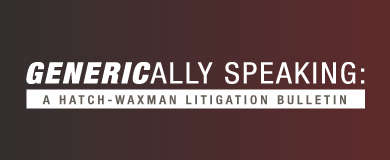- Acumen Powered by Robins Kaplan LLP®
- Affirmative Recovery
- American Indian Law and Policy
- Antitrust and Trade Regulation
- Appellate Advocacy and Guidance
- Business Litigation
- Civil Rights and Police Misconduct
- Class Action Litigation
- Commercial/Project Finance and Real Estate
- Corporate Governance and Special Situations
- Corporate Restructuring and Bankruptcy
- Domestic and International Arbitration
- Entertainment and Media Litigation
- Health Care Litigation
- Insurance and Catastrophic Loss
- Intellectual Property and Technology Litigation
- Mass Tort Attorneys
- Medical Malpractice Attorneys
- Personal Injury Attorneys
- Telecommunications Litigation and Arbitration
- Wealth Planning, Administration, and Fiduciary Disputes
Acumen Powered by Robins Kaplan LLP®
Ediscovery, Applied Science and Economics, and Litigation Support Solutions
-
April 23, 2024David Martinez Recognized Among Top 100 Lawyers in Los Angeles by LA Business Journal
-
April 15, 2024Robins Kaplan Named to 2024 BTI Client Service A-Team
-
April 9, 2024Robins Kaplan LLP Files Complaint Against Social Media Giants Meta, Snap, TikTok on Behalf of Spirit Lake Nation, Menominee Indian Tribe of Wisconsin
-
April 30, 2024Navigating Generational Dynamics
-
May 2-3, 2024ACI Advanced Forum on Managed Care Disputes and Litigation
-
May 6, 2024Litigating with the Legends
-
First QuarterGENERICally Speaking: A Hatch-Waxman Litigation Bulletin
-
March 2024e-Commerce: Pitfalls and Protections
-
March 25, 2024Endo Ventures Unlimited Co. v. Nexus Pharms. Inc.
-
September 16, 2022Uber Company Systems Compromised by Widespread Cyber Hack
-
September 15, 2022US Averts Rail Workers Strike With Last-Minute Tentative Deal
-
September 14, 2022Hotter-Than-Expected August Inflation Prompts Massive Wall Street Selloff
Find additional firm contact information for press inquiries.
Find resources to help navigate legal and business complexities.
Pronova Biopharma Norge AS v. Teva Pharma. USA Inc.
August 16, 2012

Case Name: Pronova Biopharma Norge AS v. Teva Pharma. USA Inc. et al., Civ. Nos. 09-286-SLR, 2012 U.S. Dist. LEXIS 73937 (D. Del. May 29, 2012) (Robinson, J.)
Drug Product and Patent(s)-in-Suit: Lovaza® (erlotinib hydrochloride); U.S. Pat. Nos. 5,656,667 ("the '667 patent") and 5,502,077 ("the '077 patent")
Nature of the Case and Issue(s) Presented: The central issue presented was whether the composition claims of the '667 patent are invalid for public use. To support their argument, Defendants pointed to product samples that were shipped to a researcher at the Cleveland Research Institute. It was undisputed that those product samples met all of the claim limitations. But the Court determined that there was insufficient evidence to demonstrate that the Cleveland Research Institute actually used the product to constitute a public use. The defendants also raised claims of obviousness, unenforceability on the basis of inequitable conduct, and non-infringement. Like the public use argument, the Court found that defendants had not met their burden with respect to those defenses as well.
Why Pronova Prevailed: Pronova prevailed with respect to public use due to the lack of corroborating evidence. All of the parties agreed that the Cleveland Research Institute received product samples which met all of the claims of the '667 patent. The pivotal question for the Court to consider was whether the claimed invention was actually used and, if so, in what manner. According to the Court, the Research Institute could confirm that the samples were received and tested to confirm the certificate of analysis. According to trial testimony, staff at the Research Institute used the product samples for a study and tracked the results in a notebook. This information was purportedly shared amongst those at the Research Institute and freely exchanged at conferences and with colleagues. Defendants, however, failed to offer corroborating testimony to support those claims. Instead, defendants pointed to two letters requesting more information regarding the product samples. The Court was not persuaded that those letters could serve as corroborating evidence. Rather, the Court found that it was simply evidence that the product samples were being shopped in the marketplace and not that there was any actual prior use.
Defendants further argued that the claims were obvious in view of numerous prior art references. The Court determined that defendants failed to meet their clear and convincing burden since they did not address the asserted claims as a whole and provided no detailed comparison between the prior art and the full scope of the claims, which were directed to unique mixed-fatty-acid compositions that include, among other things, a specific combination of omega-3 and omega-6 fatty acids, other than just EPA and DHA, in particular amounts. There was also no articulated reason to combine the prior art references, nor a reasonable expectation of success in doing so. Additionally, defendants asserted that the patents were unenforceable due to inequitable conduct, arguing that the inventor prepared/submitted a false declaration to the PTO and attempted to conceal data revealing the declaration's falsity. The Court rejected the argument, stating that defendants failed to offer evidence of deceptive intent separate and apart from materiality and that the facts do not permit a reasonable inference that the inventor submitted the declaration with the intent to deceive. Finally, the Court also determined that the proposed formulations infringed the patents-in-suit. The Defendants' only non-infringement argument relies upon their proposed construction of "fatty acids." The Court did not accept defendants' construction but rather, adopted a broad construction for "fatty acids" and thus, found that defendants infringed the patents-in-suit.
Related Publications
Related News
If you are interested in having us represent you, you should call us so we can determine whether the matter is one for which we are willing or able to accept professional responsibility. We will not make this determination by e-mail communication. The telephone numbers and addresses for our offices are listed on this page. We reserve the right to decline any representation. We may be required to decline representation if it would create a conflict of interest with our other clients.
By accepting these terms, you are confirming that you have read and understood this important notice.
